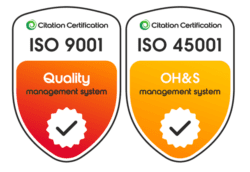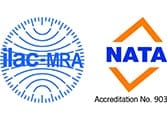Welding is a fabrication process which implements fusion to repair cracked or otherwise damaged metal components or equipment
When the need for weld repairs arises, often so does the pressure to fix the equipment quickly and resume operations with minimal downtime.
However, hasty and inadequate repairs can reveal themselves to be costlier in the long run, and caution should be exercised.
Even before the welding process takes place, the initial cause of the defect should be determined. Post-deformation root cause analysis, or simply failure analysis, can be instrumental in pinpointing what exactly has caused the damage in the first place.
The underlying reasons can range from faulty initial fabrication (either inadequate materials or workmanship), to normal in-service defects or fatigue cracks, degradation due to external factors (moisture, temperature), and improper use, such as exposing the equipment to weight loads past its certified load limit.
While in the short term, fixing the existing defect is important, it is even more so to determine its cause correctly, so as to curb, and ideally prevent, its future occurrence.
While welding processes can vary significantly based on the application, the following best practices should be included in any welding procedure. First and foremost, all surfaces to be welded need to be cleaned, including removing any grease, dirt, oxidation and paint if present.
Neglecting this crucial step may result in porosity or impurities in the weld metal, impacting its physical characteristics and making it potentially more susceptible to cracking. Occasionally, components may need to be re-welded. In this case, old weld should be removed by way of gouging or grinding, paying attention not to remove the base metal where possible.
The new welding should then wholly fill and eliminate the discontinuity in the metal. Finally, post-weld inspection is a critical element of any welding process. In fact, when done incorrectly, repairs can create a ripple of new issues.
Hence, the entire weldment should be inspected by way of non-destructive testing methods such as magnetic particle or liquid dye penetrant testing.
While the key takeaway is “fix it properly to avoid having to do it again”, the fundamental question in welding is whether a weld repair is advisable at all.
Should a new part be perhaps preferred instead?
Points to consider are the safety implications of a potential catastrophic failure, any impact on service life or performance, and the presence of any standards or regulations barring the use of welding in your particular application.
Hooks, for instance, are a quintessential example of an item that should be replaced, never repaired, as the consequences of its failure while carrying a heavy or hazardous load can be devastating.
When performed correctly, a weld repair can yield a product which performs over and above its design requirements, saving you both time and money in maintenance and repair overheads, and extending its overall in-service life.
However, welding is a process where experience and know-how are indispensable, and resorting to the services of professionals is highly recommended.
Weld Repair Services
Reliance Hexham has many years of experience across all aspects of weld repairs in diverse industry sectors, including mining, steel and aluminium processing, construction, materials handling, specialised lifting, and other types of machinery.
Our qualified tradespeople carry out weld repairs following the highest operational standards in accordance with AS/NZS 1554.1 – Structural Steel Welding – Welding of Steel Structures, ensuring that the parameters of the repair procedure are consistently respected.
After they assess the suitability of welding as a repair method for your application, our technicians will help you to choose safest and most efficient technique for the job. They will then work to supply the highest quality weld and ensure your equipment is in its best working condition at delivery.
To do so, our technicians may evaluate the need for any post-weld treatments, such as heat treatment, to enhance the physical characteristics and performance of the component.
Lastly, final Non-Destructive Testing will rule out any subsistent discontinuities, this part of our process goes above and beyond the minimum requirements laid out by AS/NZS 1554.1.
Our team of experienced, professionally qualified engineers are able to investigate the origins of fractures and establish their root cause, determining preventive measures to avoid any future occurrences.
Prior to implementing a new part or structure, function testing may also be advisable to minimise future scheduled downtime costs due to faulty design or other structural issues.
Reliance Hexham offers weld repairs both in our workshop and on site
During site testing, any discontinuities that are found can be weld repaired by our qualified tradespeople and retested directly on site so as to have the equipment ready for use immediately after job completion. Carrying out weld repairs requires knowledge and expertise. Reliance Hexham offers both
If you need more information or would like to request a quote, please do not hesitate to contact us.











